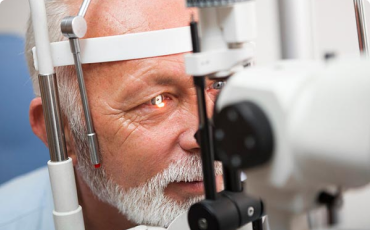Can Your Eyes Cause Dyslexia, Reading Comprehension Difficulties, and a Learning Disability?
It may be your eyes:
Can Your Eyes Cause Dyslexia, Reading Comprehension Difficulties, and a Learning Disability?
It may be your eyes:

Dyslexia, reading comprehension difficulties, and learning disabilities all negatively affect our ability to read and sometimes focus. Anyone who has been diagnosed with one of these conditions or has difficulty reading or paying attention in school or at work knows how frustrating it can be. But what if the cause behind these issues is your eyes?
Binocular Vision Dysfunction, also known as BVD, occurs when our eyes are slightly misaligned and can lead to symptoms commonly confused with dyslexia, learning disabilities,difficulties with reading comprehension, and ADHD or ADD.

How BVD Can Cause Dyslexia, Reading Comprehension Difficulties, and a Learning Disability
BVD leads to eye misalignment. The amount of misalignment can be large or small. When it is large, people tend to see two images or have double vision. When the misalignment is small, people struggle not to see double.
Under normal viewing conditions, we have two eyes that are side-by-side, looking directly at the target, resulting in two slightly different images. Our brain is able to transform these images into one clear image. This is known as binocular vision.
However, for someone who suffers from BVD, their eyes are not looking directly at the target - they are slightly out of alignment or out of sync with each other. The result is the brain has tremendous difficulty processing the two out-of-alignment images into one clear image. The brain forces the eye-aligning muscles to fix the problem by realigning the eyes. Over time, this places an immense amount of strain on the eye muscles and leads to dizziness and regular episodes of nausea.
A helpful way to think of BVD is like this: Imagine if one image was misaligned upward ever so slightly that one eye is reading one line, while the other eye is reading the line below. This would severely impact reading comprehension, since the brain would be trying to read words from two different lines at the same time.
This ultimately leads to symptoms such as dizziness, nausea, and difficulty reading, as well as many others. This can result in dyslexia, reading comprehension difficulties, and misdiagnosis of a learning disability.
How Do You Know If You Have Binocular Vision Dysfunction?
People with Binocular Vision Dysfunction often experience a variety of symptoms that can be debilitating and reduce their quality of life. Someone with BVD might have difficulty with reading books or articles, paying attention in class, focusing on work or school assignments, as well as find themselves avoiding social activities or even driving their car.
The symptoms typically include pain, balance and coordination difficulties, reading, vision, and psychological symptoms.
- Pain Symptoms: Such as face ache, eye pain, or pain with eye movement (symptoms similar to sinus problems, migraines, TMJ problems); neck ache and upper back pain due to a head tilt (similar to spinal misalignment symptoms).
- Balance and Coordination Symptoms: Motion sickness, nausea, poor depth perception, unsteadiness while walking or drifting to one side while walking (“I’ve always been clumsy”), lack of coordination with symptoms being those seen in patients with MS, patients who have experienced a stroke, an inner ear disorder, or Meniere’s Disease.
- Reading Symptoms: Difficulty with concentration (symptoms are similar to those experienced with ADHD), difficulty with reading and comprehension, skipping lines while reading, losing one’s place while reading, words running together while reading (symptoms similar to those seen with a learning disability).
- Vision Symptoms: Blurred vision, double or overlapping vision, shadowed vision (symptoms similar to those seen in patients with MS), light sensitivity, difficulty with glare or reflection.
- Psychological Symptoms: Feeling overwhelmed or anxious when in large contained spaces like malls or big box stores like Walmart, feeling overwhelmed or anxious in crowds or while driving (symptoms similar to those seen in patients with anxiety or agoraphobia).
If you have seen your primary care doctor or specialist and there still has been no cause found for your nausea and other symptoms, it could be BVD.
How Do You Get BVD?
BVD can be the result of nerve or eye muscle abnormality (a common condition many people are born with, and common in children with reading/learning challenges), or it can develop as a result of stroke, brain injury, concussion, or a similar neurological disorder.
How Do You Fix BVD?
BVD is treated by correcting the eye misalignment using our micro-prism lenses. These glasses bend light in a way that the images seen by your eyes are moved into the position they need to be in, resulting in realigned images. When the images seen by your two eyes are realigned, your brain can easily transform them into one, singular image. Your dizziness, difficulty reading, and other uncomfortable symptoms caused by BVD are significantly reduced or eliminated.
In fact, the average patient will notice a 50% reduction of symptoms by the end of their first visit. Over the next several visits, our team at Vision Specialists of Michigan will fine-tune your lenses so that your dizziness, reading difficulties, and trouble focusing, as well as other BVD symptoms, can continue to improve and maybe even eliminated.
Dyslexia, Reading Comprehension Difficulties, and Learning Disability in Children
Dyslexia, learning disabilities, and reading comprehension difficulties can affect both adults and children. For children, it can result in them falling behind academically in school (delaying their learning), as well as resulting in a misdiagnosis of ADD, ADHD, or dyslexia.
If your child has BVD, the symptoms will vary depending on their age.

How Is BVD Diagnosed?
In order to determine if your dyslexia, learning disabilities, or reading comprehension difficulties are the result of BVD, we recommend you visit your primary care physician or a specialist to rule out other causes. If no cause is found for the symptoms, our team at Vision Specialists of Michigan can help determine if BVD is the issue.
During your visit:
- We ask you to fill out a specialized questionnaire designed to screen for those who might have BVD.
- You will be asked to complete a detailed Health History form.
- An eye exam is performed to determine the need for correction of nearsightedness, farsightedness, and astigmatism (a common imperfection in the eye’s curvature).
- A specialized exam is performed (NeuroVisual Evaluation) to determine if visual misalignment is present.
- If diagnosed with BVD, you will be fitted with a trial version of your new prescription. Most people notice a significant improvement in their symptoms within just a few minutes of putting on the trial lenses.
You can expect to spend approximately 3 hours in our office during your visit.
Other Symptoms of BVD
Symptoms of BVD in Adults
There are several symptoms associated with BVD in adults, which typically include the below. Some individuals experience all of these symptoms, while others experience only a few, such as headaches, nausea, and dizziness. These symptoms are also very similar to those associated with vestibular migraines and vertigo.
- Headaches
- Migraines
- Dizziness
- Nausea
- Anxiety
- Sensitivity to light
- Difficulty with balance / unsteady walking
- Pain in the neck
- Frequent head tilt
- Motion sickness
- Reading comprehension, difficulty reading and learning
- Dyslexia
- Learning disability
- ADHD/ADD
Symptoms of BVD in Children
If your child has BVD, the symptoms will vary depending on their age.
For children ages 4 to 8-years-old, common behaviors and symptoms of Binocular Vision Dysfunction can include:
- Poor handwriting (poor spacing, writing letters too big or small)
- Difficulty reading
- Avoiding activities
- Playing with toys very close to their face
- Sitting close to the TV
- Difficulty identifying shapes, colors and numbers that are age-appropriate
- Difficulty seeing the class board
- Frequently bumping into objects
- Difficulty catching balls
- Stomach aches and headaches at school or away from home
- Light sensitivity
- Covering one eye to see
- Anxiety in public places
- Frequent squinting in order to see
For children ages 9 to 13-years-old, common behaviors and symptoms of Binocular Vision Dysfunction can include:
- Repeatedly bumping into things while walking
- Having difficulty completing homework due to headaches and nausea
- Repeatedly reading the same things over and over
- Sensitivity to bright lights
- Closing one eye to make it easier to see
- Blurred vision when using the computer
- Blurred vision or tired eyes when looking at the blackboard in class
- Verbal skills that are ahead of reading skills
- Frequent blinking
Get Treatment for Your Dyslexia, Reading Comprehension Difficulties, Learning Disability, and Binocular Vision Dysfunction Now
For anyone suffering from dyslexia, reading comprehension difficulties, or a learning disability as a result of BVD, there is treatment. Our compassionate doctors at Vision Specialists of Michigan will complete a thorough NeuroVisual Examination to determine the extent of your vision misalignment (or your child’s) and prescribe you with the specialized aligning lenses. Every person can receive treatment for BVD, as long as they are old enough to wear the specialized aligning glasses (and be able to tell or show the doctor how they feel).
Want to learn more about Binocular Vision Dysfunction?
Watch these videos of BVD patient experiences:
Veteran's Story of Binocular Vision Dysfunction and Triumph over TBI
Soldier's TBI Caused Dizziness and Headaches Until Receiving Aligning Glasses
David's Binocular Vision Dysfunction Story:












